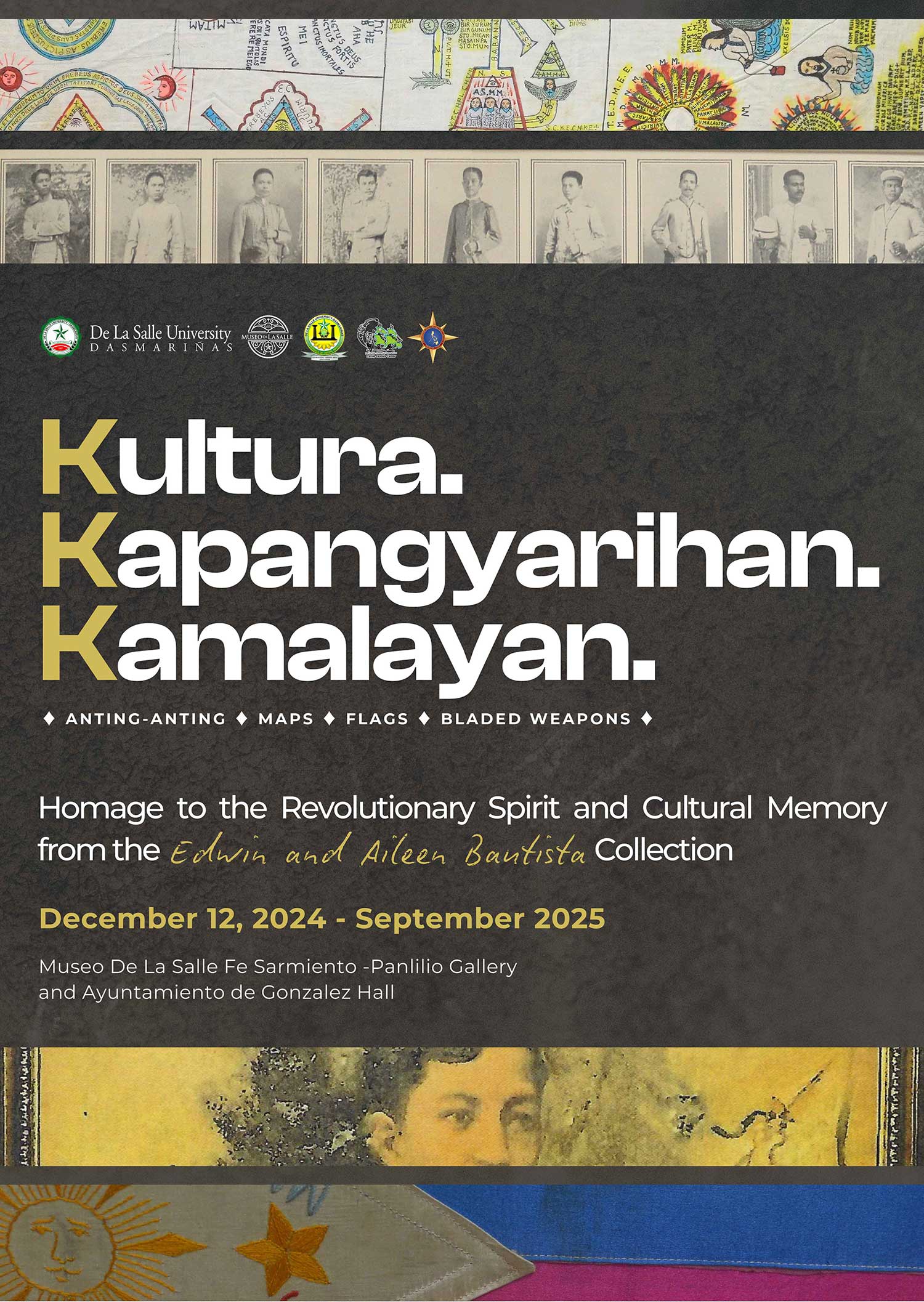- Visit us |
- Virtual Tour |
- VCM
Central to this exhibition is the remarkable assemblage curated by Mr. Edwin Bautista, a notable Caviteño with profound ancestral connections to the revolutionary Riego de Dios brothers—Emiliano, Mariano, and Vicente—who played pivotal roles in the Philippine resistance against Spanish colonial rule in the late 19th century. Embodying the revolutionary ethos of his lineage, Mr. Bautista, alongside his spouse Aileen, has committed himself to the conservation of rare and historically significant artifacts.
The Bautista collection represents an unparalleled repository of items from the late 19th to mid-20th century, including anting-anting (amulets), liturgical vestments, Rizalista memorabilia, and sacred artifacts. These objects, often categorized by colonial authorities as mamarachos (grotesque) or imágenes repulsivas (repulsive images), not only encapsulate folk religious practices but also showcase the intricate local craftsmanship. Produced by untrained artisans, they illustrate a captivating synthesis of indigenous beliefs and Catholic iconography, offering an authentic insight into Filipino spirituality and identity.

In addition to religious artifacts, the collection features indigenous bladed weapons and arms associated with the Katipunan, as well as captured flags and rare maps. The flags, symbols of nationhood, and trophies of war, alongside these maps that chart the evolution of the Southeast Asian islands into what is now the Philippines and tracing the route of the Manila-Acapulco galleons, form a visual and symbolic narrative of the Filipino struggle for independence.
Through this collection, Museo De La Salle enriches its holdings and provides a deeper understanding of the Filipino revolutionary experience. Each artifact serves as a tangible link to the past, inviting visitors to reflect on the nation’s history and their own role as custodians of its cultural heritage. The Bautista family’s legacy extends beyond preserving objects—they inspire others to see their potential as stewards of history
A focal point of the exhibition is the anting-anting, an essential part of Cavite’s cultural and spiritual identity. These amulets, believed to possess supernatural powers, are deeply intertwined with local traditions and spiritual practices. Made from organic materials like wood, metal, or fabric, they are passed down through generations, imbued with rituals and prayers for protection, healing, or good fortune. This exhibit offers a rare opportunity to explore the enduring cultural significance of anting-anting and their influence on Caviteño identity.
In addition, the exhibition showcases three powerful and interconnected symbols of Filipino heritage: maps, flags, and bladed weapons. These artifacts bear witness to the nation’s evolving identity, its history of resistance, and the enduring strength of its people. Through these objects, visitors are invited to contemplate the Philippines’ complex history and the resilience of its cultural spirit.